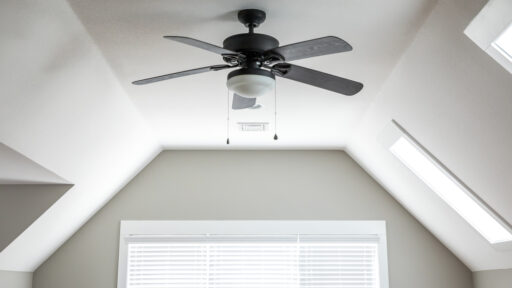Have you ever faced the stress of waking up to a flooded home or office? Water damage can happen quickly, leaving behind costly destruction and health risks.
From burst pipes to storm floods, the need for urgent action cannot be ignored. Without fast removal, mold growth and structural issues soon follow. Professional help ensures safety, efficiency, and peace of mind during these emergencies.
Knowing what to do in the right order can make all the difference. This guide provides clear steps to help protect your property. Read on!
Recognizing the Signs of Water Damage
Water damage often begins with subtle signs before it turns into a bigger problem. Stains on ceilings, peeling paint, or musty odors may indicate water is present. Warped floors and discolored walls are also warning signals that should not be ignored.
In severe cases, pools of standing water clearly point to an emergency. Even small leaks can cause damage if left untreated for too long. Recognizing these early clues helps stop the problem from spreading further.
Quick identification saves time, money, and unnecessary stress later. The first step is always awareness of what to look for.
Ensuring Safety Before Starting Removal
Safety is the most important concern when water damage occurs. Standing water may carry bacteria, mold, or harmful chemicals. Electrical hazards also become a risk when outlets, cords, or appliances are wet.
Before entering, always shut off the power to avoid shock or injury. Wear protective clothing like gloves, boots, and masks to stay safe. If flooding is severe, avoid going inside until professionals give clearance.
Safety steps protect both health and property during water removal efforts. Once risks are addressed, it becomes easier to focus on solving the problem.
Stopping the Source of Water Immediately
The next step is identifying and stopping the source of water. Common causes include broken pipes, leaking roofs, or natural floods. Shutting off the main water supply quickly prevents additional water from spreading.
Covering roof leaks with tarps or sealing pipe leaks can help until repairs are made. In some cases, contacting utility services may be necessary to control the situation.
The faster the source is managed, the less severe the damage becomes. Immediate action reduces repair costs and helps restore property faster. A contained source means cleanup efforts can truly begin.
Removing Standing Water Quickly
Once the source is controlled, the focus shifts to water removal. Buckets, mops, and towels may work for minor flooding, but larger volumes need pumps or wet vacuums.
Professionals often bring industrial tools designed to remove water efficiently. Standing water must be removed as soon as possible to avoid further damage. The longer water remains, the deeper it seeps into floors and walls.
Carpets, furniture, and belongings can all be affected if water sits too long. This step is one of the most important in emergency recovery. Quick removal lays the foundation for complete restoration.
Drying and Dehumidifying the Area
After the standing water is gone, drying is the next critical stage. Moisture lingers in walls, floors, and furniture, even if surfaces look dry. Fans, heaters, and dehumidifiers speed up the drying process.
Professional-grade equipment ensures that hidden moisture is removed completely. Without proper drying, mold can grow within 24 to 48 hours.
Dehumidifying the air prevents condensation and additional damage in the room. This step requires patience because full drying can take several days. Complete drying ensures the area is safe and ready for restoration.
Cleaning and Sanitizing Affected Surfaces
When water damage happens, it often leaves behind germs, dirt, or dangerous materials. Cleaning is important to keep things safe and to keep people healthy. To get rid of germs, surfaces should be cleaned with disinfectants.
Carpets, furniture, and personal items may need to be cleaned by an expert. When water backs up, cleaning up is even more important. Treatments that get rid of smells can also get rid of smells that come from standing water.
When you clean a place properly, it becomes habitable again and the risk of getting sick goes down. This process makes people feel safe and comfortable in their surroundings again.
Checking for Mold and Structural Damage
Inspections are necessary because mold grows quickly in wet places. Carefully look at the walls, ceilings, and any unexpected areas. Beyond destroying property, mold also makes people sick with allergies and lung problems.
Checking the beams, floors, and supports is also important for the structure. They can become weaker if they are exposed to water for a long time. Repairs should be done right away by professionals if mold or damage is found.
Early action on these problems stops bigger, more expensive problems from happening later. Property safety and stability are ensured for the long term by a thorough review.
Repairing and Restoring Damaged Areas
Restoration involves bringing the property back to its original condition. Damaged drywall, flooring, or insulation may need replacement. Wooden surfaces might require sanding or refinishing after drying.
Painting and sealing walls restores appearance and protects against future moisture. Carpets and upholstery may be repaired or replaced depending on the extent of damage. This stage often requires skilled contractors for lasting results.
Professional services also ensure compliance with safety and building standards. To restore normal life quickly, it is wise to get emergency restoration services now.
Preventing Future Water Damage
As a last step, getting ready for future situations is important. Checking pipes, roofing, and appliances regularly can help you find problems early. Putting in backup power systems and sump pumps lowers the chance of flooding.
Cracks should be sealed, and drains should be improved around the property to make it safer. Cleaning the drains regularly keeps water from getting into the foundations. Water alarms can let you know right away if there is a leak.
Getting professional maintenance services through a contract may give you peace of mind. Prevention plans help you save time, money, and stress over time. By taking care of the property today, you can escape bigger problems tomorrow.
Preventing Damage with Emergency Water Removal Services
Handling water damage may feel overwhelming, but a structured approach makes it manageable. By recognizing early signs, securing safety, and removing water quickly, the most urgent threats can be reduced.
Proper drying, cleaning, and mold inspection ensure that no hidden damage remains. Restoring and repairing bring the property back to normal, while prevention strategies safeguard against future problems.
Emergency water removal is not just about cleanup; it is about protecting health, safety, and financial stability. With clear steps, recovery becomes faster and less stressful.
Did you like this guide? Great! Please browse our website for more!








